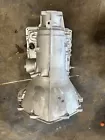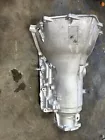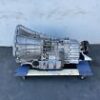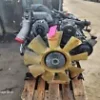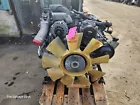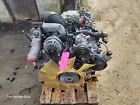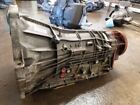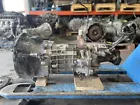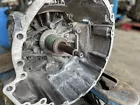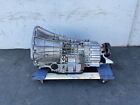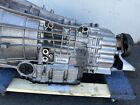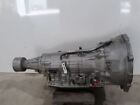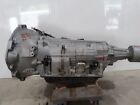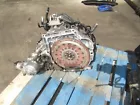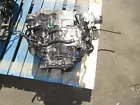GM CHEVY 4L60E TRANSMISSION
1,350 $ Original price was: 1,350 $.1,160 $Current price is: 1,160 $.
GM CHEVY 4L60E TRANSMISSION: A Comprehensive Guide
The GM CHEVY 4L60E TRANSMISSION is one of the most widely used automatic transmissions in General Motors’ lineup, especially during the 1990s and early 2000s. It is an electronically controlled, 4-speed automatic transmission that was designed for rear-wheel-drive and four-wheel-drive vehicles, commonly found in Chevrolet, GMC, and other GM brands. This transmission has a reputation for reliability but also has some common issues that owners and mechanics should be aware of.
GM CHEVY 4L60E TRANSMISSION: A Comprehensive Guide
The GM CHEVY 4L60E TRANSMISSION is one of the most widely used automatic transmissions in General Motors’ lineup, especially during the 1990s and early 2000s. It is an electronically controlled, 4-speed automatic transmission that was designed for rear-wheel-drive and four-wheel-drive vehicles, commonly found in Chevrolet, GMC, and other GM brands. This transmission has a reputation for reliability but also has some common issues that owners and mechanics should be aware of.
Background and Evolution
The GM CHEVY 4L60E TRANSMISSION is the electronically controlled evolution of the earlier 4L60, which itself was a derivative of the venerable Turbo-Hydramatic 700R4 transmission introduced in the early 1980s. The addition of electronic controls allowed the GM CHEVY 4L60E TRANSMISSION to improve shift quality, fuel economy, and overall performance by precisely controlling shift timing and firmness through the Transmission Control Module (TCM).
-
“4” refers to the number of forward gears.
-
“L” stands for longitudinal mounting (rear-wheel-drive vehicles).
-
“60” indicates the transmission’s torque capacity relative to other transmissions in GM’s lineup.
-
“E” denotes electronic control.
The GM CHEVY 4L60E TRANSMISSION was used extensively in light trucks, SUVs, and passenger cars from about 1993 to 2007 before being succeeded by the 6-speed 6L80 and other newer transmissions.
Transmission Design and Components
The GM CHEVY 4L60E TRANSMISSION features a combination of hydraulic, mechanical, and electronic systems working together:
Key Components:
-
Torque Converter: Connects the engine to the transmission and multiplies torque during acceleration.
-
Valve Body: The hydraulic control center that directs transmission fluid to various clutch packs and bands to create gear changes.
-
Clutch Packs and Bands: Responsible for engaging and disengaging gears. The GM CHEVY 4L60E TRANSMISSION uses multiple clutch packs to switch between gears.
-
Electronic Solenoids: Controlled by the TCM, these solenoids regulate hydraulic pressure to apply the correct clutch packs for gear shifts.
-
Transmission Control Module (TCM): The “brain” of the transmission, monitoring sensors and controlling solenoids to optimize shifts. It often communicates with the engine control unit (ECU) for smooth operation.
-
Output Shaft: Transfers power from the transmission to the driveshaft.
How the GM CHEVY 4L60E TRANSMISSION Works
When the driver selects a gear, the TCM determines the optimal shift points based on inputs such as vehicle speed, engine RPM, throttle position, and load. It energizes solenoids that open or close valves in the valve body, controlling the flow of pressurized transmission fluid to apply or release clutch packs and bands, thus engaging the appropriate gear.
The GM CHEVY 4L60E TRANSMISSION has four forward gears plus reverse:
-
1st gear: High torque, low speed for acceleration from a stop.
-
2nd gear: Used for moderate acceleration and light loads.
-
3rd gear: Often a direct drive, providing a balance between power and efficiency.
-
4th gear (Overdrive): Reduces engine RPM at highway speeds, improving fuel economy and reducing engine wear.
Applications
The GM CHEVY 4L60E TRANSMISSION was installed in a wide range of GM vehicles, including:
-
Chevrolet Silverado 1500 and 2500
-
GMC Sierra 1500 and 2500
-
Chevrolet Tahoe and Suburban
-
GMC Yukon
-
Chevrolet Camaro
-
Pontiac Firebird
-
Various other rear-wheel-drive cars and SUVs
It was available in both two-wheel drive (2WD) and four-wheel drive (4WD) configurations.
Common Problems and Failures
Despite its popularity, the GM CHEVY 4L60E TRANSMISSION is not without faults, especially in high-mileage or heavy-duty applications. Common issues include:
a. Overheating
Transmission fluid overheating is a frequent cause of premature wear. Heavy towing, stop-and-go traffic, or driving in hot climates without additional cooling can cause the fluid to degrade, leading to poor lubrication and clutch damage.
b. Shift Problems
Symptoms include hard shifts, slipping, delayed engagement, or failure to shift properly. These may be caused by:
-
Worn or damaged clutch packs or bands
-
Faulty solenoids
-
Low or dirty transmission fluid
-
Malfunctioning TCM or sensors
-
Valve body problems
c. Torque Converter Problems
Issues such as shuddering or slipping at certain speeds can be related to the torque converter clutch (TCC) solenoid or the torque converter itself.
d. Electrical and Sensor Failures
Since the GM CHEVY 4L60E TRANSMISSION relies on electronic controls, problems with wiring, connectors, or sensors (vehicle speed sensor, throttle position sensor) can cause erratic shifting or “limp mode.”
e. Pump and Seal Wear GM CHEVY 4L60E TRANSMISSION
High mileage transmissions often suffer from worn seals or a weak pump, causing low fluid pressure and shifting problems.
Maintenance Recommendations
To maximize the lifespan and performance of the GM CHEVY 4L60E TRANSMISSION, regular maintenance is crucial.
Fluid and Filter Changes
-
Use the manufacturer-recommended transmission fluid, typically Dexron VI or compatible fluids.
-
Change transmission fluid and filter approximately every 30,000 to 60,000 miles, depending on vehicle use and driving conditions.
-
Avoid overfilling or underfilling the transmission fluid.
Cooling System
-
Ensure transmission fluid cooler lines are intact and the cooler itself is functioning well.
-
Consider adding an auxiliary transmission cooler if towing or hauling heavy loads frequently.
Inspection and Repairs
-
Address any transmission-related warning lights immediately.
-
Have the transmission scanned for trouble codes if shifting issues arise.
-
Periodically inspect wiring harnesses and connectors for corrosion or damage.
Troubleshooting Common Issues
Symptom: Hard or Harsh Shifts
-
Check fluid level and condition; replace if burnt or dirty.
-
Scan for transmission codes.
-
Test and possibly replace shift solenoids.
-
Consider a valve body rebuild or replacement if mechanical wear is suspected.
Symptom: Slipping Gears
-
Low fluid level or worn clutch packs could be the cause.
-
Test fluid pressure with a gauge.
-
Rebuild or replace worn internal parts.
Symptom: No 4th Gear (No Overdrive)
-
Could indicate a faulty 4th gear clutch or solenoid.
-
Check TCC solenoid and transmission fluid condition.
Symptom: Transmission Won’t Shift Out of Park
-
Check the shift linkage and neutral safety switch.
-
Inspect TCM and related sensors.
Upgrades and Rebuilds
The 4L60E is a popular candidate for rebuilding or upgrading, especially for performance or heavy-duty use.
Common Upgrades:
-
Heavy-duty clutch packs and bands
-
High-performance torque converters
-
Enhanced valve bodies for firmer shifts
-
Upgraded solenoids and wiring harnesses
-
Transmission coolers to reduce operating temperatures
Professional rebuild kits and performance parts are widely available, and many mechanics specialize in GM CHEVY 4L60E TRANSMISSION work.
Summary
The GM CHEVY 4L60E TRANSMISSION has been a stalwart automatic transmission in the GM vehicle lineup for over a decade, prized for its versatility and solid performance. Proper maintenance and prompt attention to problems can keep the GM CHEVY 4L60E TRANSMISSION running smoothly for many miles. Understanding its electronic and hydraulic operation helps owners and mechanics diagnose issues efficiently and improve reliability.
Related products
Transmissions
Transmissions
Transmissions
Transmissions
Transmissions
Transmissions
Transmissions
Transmissions


